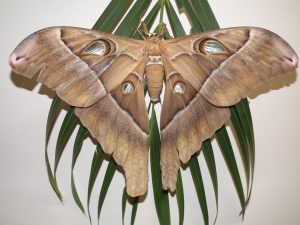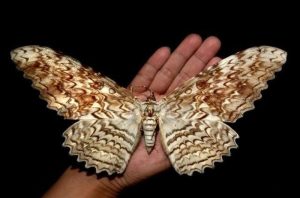Instead of one big fact this week, we thought we’d share 24 little facts about butterflies with you, courtesy of The Butterfly Site!
- Butterflies range in size from a tiny 1/8 inch to a huge almost 12 inches.
- Butterflies can see red, green, and yellow.
- Some people say that when the black bands on the Woolybear caterpillar are wide, a cold winter is coming.
- The top butterfly flight speed is 12 miles per hour. Some moths can fly 25 miles per hour!

- Monarch butterflies journey from the Great Lakes to the Gulf of Mexico, a distance of about 2,000 miles, and return to the north again in the spring.
- Butterflies cannot fly if their body temperature is less than 86 degrees.
- Representations of butterflies are seen in Egyptian frescoes at Thebes, which are 3,500 years old.

- Antarctica is the only continent on which no Lepidoptera have been found.
- There are about 24,000 species of butterflies. The moths are even more numerous: about 140,000 species of them were counted all over the world.
- The Brimstone butterfly (Gonepterix rhamni) has the longest lifetime of the adult butterflies: 9-10 months.

- Some Case Moth caterpillars (Psychidae) build a case around themselves that they always carry with them. It is made of silk and pieces of plants or soil.
- The caterpillars of some Snout Moths (Pyralididae) live in or on water-plants.

- The females of some moth species lack wings, all they can do to move is crawl.
- The Morgan’s Sphinx Moth from Madagascar has a proboscis (tube mouth) that is 12 to 14 inches long to get the nectar from the bottom of a 12 inch deep orchid discovered by Charles Darwin.
- Some moths never eat anything as adults because they don’t have mouths. They must live on the energy they stored as caterpillars.

- Many butterflies can taste with their feet to find out whether the leaf they sit on is good to lay eggs on to be their caterpillars’ food or not.
- There are more types of insects in one tropical rain forest tree than there are in the entire state of Vermont.
- In 1958 Entomologist W.G. Bruce published a list of Arthropod references in the Bible. The most frequently named bugs from the Bible are: Locust: 24, Moth: 11, Grasshopper: 10, Scorpion: 10, Caterpillar: 9, and Bee: 4.

- People eat insects – called “Entomophagy”(people eating bugs) – it has been practiced for centuries throughout Africa, Australia, Asia, the Middle East, and North, Central and South America. Why? Because many bugs are both protein-rich and good sources of vitamins, minerals and fats.
- YOU can eat bugs! Try the “Eat-A-Bug Cookbook” by David George Gordon , 10 Speed Press. Don’t want to cook them yourself? Go to HotLix for all sorts of insect goodies! My favorites are “Cricket-lickit’s” – a flavored sucker with a real edible cricket inside.

- Many insects can carry 50 times their own body weight. This would be like an adult person lifting two heavy cars full of people.
- There are over a million described species of insects. Some people estimate there are actually between 15 and 30 million species.
- Most insects are beneficial to people because they eat other insects, pollinate crops, are food for other animals, make products we use (like honey and silk) or have medical uses.
- Butterflies and insects have their skeletons on the outside of their bodies, called the exoskeleton. This protects the insect and keeps water inside their bodies so they don’t dry out.






